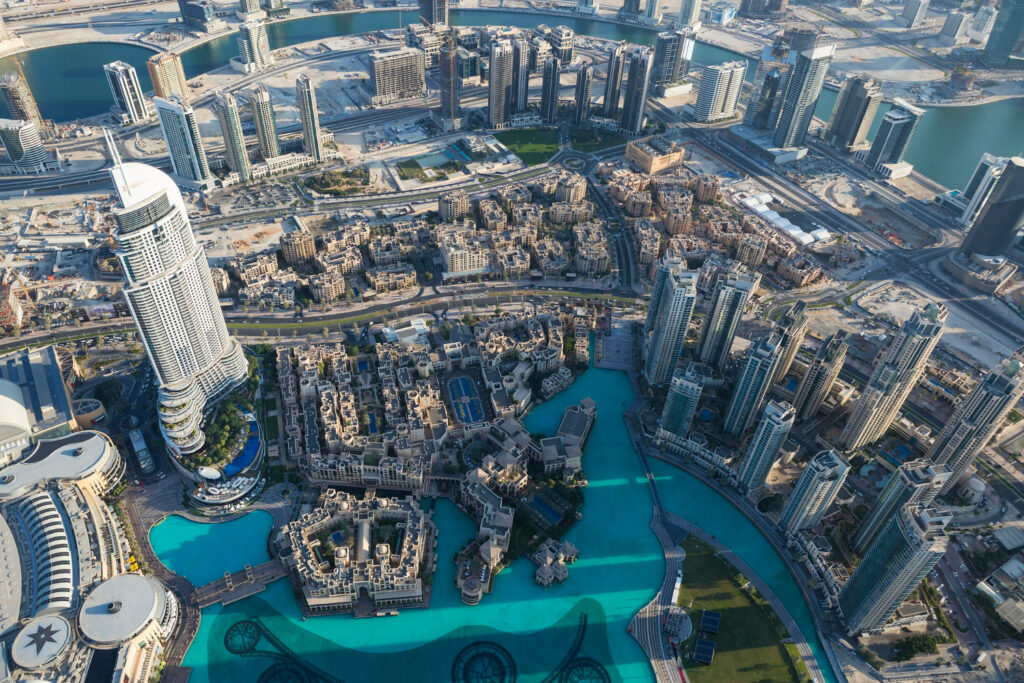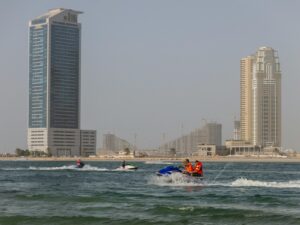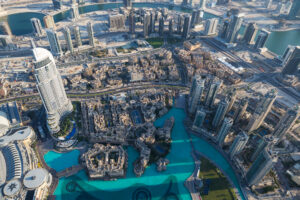The UAE: Why it’s The World’s Leading Logistics Hub

Written by Vitaliy Chiryassov, CEO of UPPERCASE
Today, the UAE is one of the largest trade and logistics hubs in the world.
Roughly 60% of the cargo shipped to the GCC region arrives through the UAE’s 12 commercial ports, passing through one of its 310 berths, which together are capable of handling 80 million tons.
Logistics is a big industry in the UAE. This sector accounts for up to 10% of the country’s GDP, and experts predict that the market will exceed 31 billion U.S. dollars by 2026.
But what is driving the UAE’s logistics growth and making it a vital hub for DHL, Aramex, UPS and hundreds of other companies? Let’s find out.
Why the UAE is a logistics powerhouse
The UAE didn’t just become one of the biggest logistics players in the world by accident. Several factors have contributed to its success. These include (in no particular order)
- Strategic geography.
- Transport infrastructure.
- Government support.
- Innovative infrastructure.
Let’s explore each one in detail:
1. Strategic geography.
Dubai sits on the southeast coast of the Arabian Gulf, bridging the East and the West.
Multiple major shipping routes pass through the UAE: the main east-west shipping lane, connects the Far East to Europe via the Suez Canal, and the Strait of Hormuz links the Middle East to Africa. This forms a convenient pathway to major consumer markets: the EU, China, and Africa,, with a population of over 1.3 billion people.
The UEA’s central location is equally convenient for air routes. Two-thirds of the world’s population is within an 8-hour flight radius, with major cities like London, Paris, Singapore, and Hong Kong just 7 hours away. Mumbai, with its huge consumer market, is a mere 3-hour flight from Dubai.
Even the time zone works in Dubai’s favor.
Situated in the (UTC+4) zone, it falls conveniently between the major business hours of Asia and Europe. This means an office in Dubai can coordinate operations with both markets during their respective working hours — a big advantage when you work with international partners.
2. Logistical Infrastructure
Firstly, the UAE has a robust maritime infrastructure. The country operates 16 commercial ports, the largest of which is the Jebel Ali Port — this port is the biggest in the Middle East, the ninth busiest in the world, and boasts the largest man-made harbor with 67 berths. It serves more than 150 shipping lines and handles 19 million containers per year.
Secondly, the UAE has invested heavily in its air cargo capabilities. For example, Dubai World Central (DWC), also known as Al Maktoum International Airport, handles up to 16 million tons of cargo annually — it’s the largest airport in the world by cargo capacity.
Finally, if you need to move goods quickly within the GCC region, the UAE has modern highways and railways. A prominent example is the Etihad Rail project. This 1,200-kilometer rail network, currently under development, will connect the UAE’s ports and industrial zones with Saudi Arabia and Oman.
3. Government Support
The UAE government supports logistics companies through various initiatives. Perhaps the most well-known is the World Logistics Passport program.
The World Logistics Passport works similarly to a loyalty program — it’s free to join, open to all, and members receive a range of benefits, such as fast-track processing and reduced fees at partner ports.
What makes this program unique is that membership is divided into tiers: white, silver, gold, and platinum. The higher the tier, the more benefits the participant receives. To move up a tier, a company needs to grow at a pace above the market average.
The program counts 23 member countries, including India, Brazil, and South Africa, and over 130 registered logistics partners.
It is said that members of the World Logistics Passport experience an annual increase in trade of 5-10%, thanks to the benefits it provides.
4. Innovations in logistics
We’ve mentioned that the UAE has some of the world’s most developed logistical infrastructure. But it doesn’t rely solely on sheer scale — the UAE government also supports innovation to drive the growth of the logistics industry.
For example, the massive throughput of UAE’s ports and airports wouldn’t matter if shipments were stuck in customs, waiting for clearance. Processing hundreds of millions of tons of cargo puts a significant strain on the system. The UAE is solving this challenge with AI — DP World’s CARGOES platform uses artificial intelligence to streamline customs procedures and ensure shipments are processed swiftly.
Another standout project belongs to DP World — it’s called Cargospeed. This megaproject, currently under joint development with Virgin Hyperloop One, is a high-speed cargo delivery system that will use hyperloop technology to transport cargo at speeds of up to 1,000 km/h, faster than air travel and at the cost of road transportation.
5. Business-friendly ecosystem
The UAE leads the Arab world in the World Bank’s Ease of Doing Business Rating and ranks 6th globally in reputation according to the Global Financial Centres Index.
This success comes from the simplicity of starting a business and its favorable business environment, particularly in free zones. These areas offer foreign businesses a range of advantages: no import or export duties, a streamlined tax regime with 5% VAT rate, and affordable registration and license renewal. Logistics companies operate in the KEZAD, JAFZA, DAFZA, Dubai South, SAIFZ, HFZ, and AFZ zones.
Free zones in the UAE are themed, meaning they gather entrepreneurs from the same or similar industries. This is done deliberately to create a close-knit community of businesspeople who help each other grow.
For example, the offices of DHL, Aramex, and Panalpina are located in the Dubai South free zone. If you open an office there, you’ll be having morning coffee in the same cafe as representatives of these logistics giants — an excellent opportunity to make useful acquaintances and perhaps even partnerships.
What’s next for UAE logistics?
Experts predict that because of the compound effect of the reasons above, the UAE’s logistics market will grow at a CAGR of 7% (the forecast looked as far as 2030). As the UAE continues to embrace innovation, there are a few trends that stand out.
Experts predict that because of the compound effect of the reasons above, the UAE’s logistics market will grow at a CAGR of 7% (the forecast looked as far ahead as 2030). As the UAE continues to embrace innovation, here are 2 trends that will shape the UAE logistics sector in the near future:
Firstly, the UAE’s Ministry of Energy and Infrastructure (MOEI) plans to increase the number of electric and autonomous trucks on the UAE’s roads. In the near future, 2,000 electric trucks and 200 autonomous trucks will be roaming the UAE’s roads.
Secondly, the second stage of the Etihad Rail, opened on February 28, 2023, connects Ghuweifat on the border with Saudi Arabia to Fujairah on the east coast. The Etihad Rail will provide AED 186 billion in economic benefits over 40 years, and its full-scale exploitation is only just beginning — locomotives will reduce the number of trucks, cutting transportation costs and CO2 emissions.
Changes are coming to the UAE’s logistics, but what will remain unchanged is the country’s commitment to development. Whether it’s hyperloops or rail networks that cut road traffic and connect major economies, whatever the UAE’s logistics has in store, one thing is for sure — it will be exciting!






